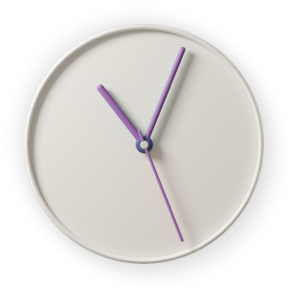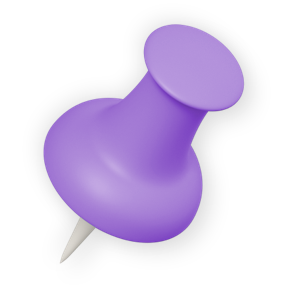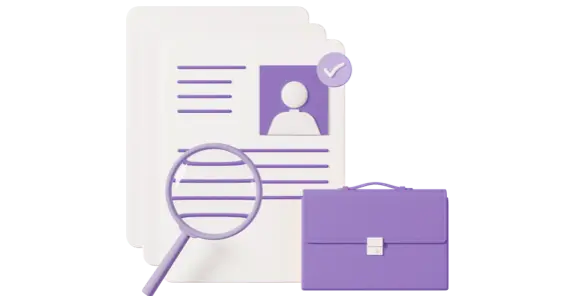User experience (UX) designer
Explore how people use things and put your design skills to work! You’ll help create digital products – from informative websites to cutting-edge apps.
Also known as: web designer, interaction designer, experience designer

About the job
A day in the life – UX designer
What it's like
As a User Experience Designer (UX designer), you’ll be a problem-solver for people using websites, apps and digital tools! Imagine helping someone find their favourite show online or making sure they can book a ticket without getting confused or frustrated.
As a UX designer, you’ll think about who'll be using the website or app. Are they children? Adults? People with specific needs or interests? You’ll do research to understand their goals, challenges and what makes an experience enjoyable or frustrating.
Working to a set of core design principles, you’ll shape digital products that are clear, simple to use and visually appealing. This involves everything from planning user journeys and sketching layouts to testing ideas and making changes based on feedback.
UX design also means thinking about the bigger picture. You’ll help create a consistent and engaging experience across all parts of a brand – from how it looks to how it feels to use. Whether it’s a mobile app, a website or an interactive display, your job is to make sure users feel confident, comfortable, and even delighted as they interact with it.
Your tasks might include:
carrying out user research to gather insights by talking to users
creating user personas and journeys to identify pain points and opportunities
wireframing the structure of digital products to show how users will move through the experience
prototyping models of products to test ideas before full development
usability testing with users to see what works well and what needs improving
collaborating with teams, working closely with developers, content designers and product managers to bring ideas to life

Hours
You’ll usually work Monday to Friday and you may need to work overtime, depending on the demands of the project.

Environment
You’ll work in an office, remote or hybrid, as part of a multi-disciplinary team.

Travel
Depending who you work for, you may need to travel to meet clients.
Explore more information about this job
Here are some useful links to learn more about this career:
Like the sound of this career?
Browse courses in Scotland related to 'User experience (UX) designer'
Select qualification level(s)
Other careers that you might like
Web developer Web editor Content designer Service designer Virtual reality designer
Related industries
Many jobs can be done in lots of different industries. We've highlighted the ones we think are most important for this job.
Transport Healthcare Financial and professional services Engineering and manufacturing Digital technologies Creative
Top skills
Skills are things you're good at. Whether you know what yours are or not, everyone has them!
It's useful to learn which ones are important in a job so you know the areas you need to brush up on. It can also help you work out if you're suited to a career.
Top specialised skills
These are the top specialised skills that have been found in job vacancies across Scotland. From March 2024 to March 2025.
- user experience (ux) design
- user research
- wireframing
- usability testing
- interaction design
- prototyping
- invision (design software)
- user experience (ux)
- figma (design software)
- design thinking
Meta skills
Here are some of the meta skills you'll need to do this job.
- attention to detail
- problem solving
- innovative
- designing
- creative
- working with technology
- verbal communication
- listening
- cooperating
- reflecting

Your skills are important
Our unique skillsets are what make us stand out from the crowd. Learn about each skill in depth and discover what employers look for in your applications and interviews.
Getting in
Explore each section to find more information about getting into this career.
Colleges and universities will list subjects you'll need for entry to a course. Some useful subjects include:
Art and Design (Design)
Computing Science
Design and Technology
Graphic Communication
Psychology
Foundation Apprenticeship: Creative and Digital Media
You can get a head start in this career by doing a Foundation Apprenticeship in S5 and S6.
You'll get an SCQF level 6 qualification which is the same level as a Higher. You'll also learn new skills and gain valuable experience in a work environment.
Discover what's on offer at your school on Apprenticeships.scot.
University
A degree could be helpful for getting into this job. You could study subjects, such as:
UX Design
Graphic Design
Digital Media and Web Design
Product Design
Human Computer Interaction (HCI)
College
Getting qualifications at college, such as an HNC or HND, could help you get a job or progress to more advanced study. Useful subjects include:
Digital Media Design
Digital Product Design
Digital Production, Design and Development
Apprenticeship
Modern Apprenticeships (MAs) mean you learn on the job. You get paid and work towards a qualification at the same time. You might want to consider an MA in Design
Discover Modern Apprenticeships on Apprenticeships.scot.
Work
You can become a UX designer through applying directly with an employer or getting an entry level job and working your way up. You can use the My World of Work job search to look for job vacancies.
If you’re working in an organisation that does user research, you could get work experience by volunteering to help in research sessions and user interviews. Search for opportunities on Volunteer Scotland.
You could also get involved with the online user experience community. You’ll find advice and tips and maybe even a mentor who can help you get started in the industry.
You’ll find it useful to have:
knowledge or coding such as HTML, CSS and JavaScript to build wireframes and prototypes
experience using design software such as Adobe Creative Suite
an understand of agile project development methods
It’s also helpful to have a portfolio to showcase examples of your work.
Industry recognised certificates may be included as part of a course or work-based learning programme, or an employer may be willing to support the right employee to gain certification.
Examples of relevant industry qualifications you may see in job adverts include:
Find the right course for you
Browse courses in Scotland related to 'User experience (UX) designer'
